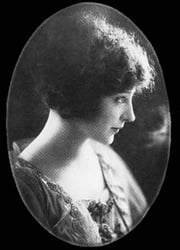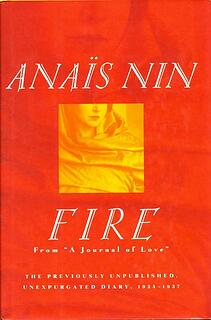“I never travel without my diary.
One must always have something sensational to read on the train.”
– Oscar Wilde, The Importance of Being Earnest (1895)
Oscar Wilde’s notorious wit has a tendency to eclipse the subjects of his many and various quips, but in the above case he has nodded toward an eminent truth for many writers. Diarist Anais Nin provides an interesting study on the matter.
By the accounts of no lesser writers than Henry David Thoreau, Virginia Woolf, and Susan Sontag, the act of keeping a diary or a journal is indispensable to one’s literary work. By Woolf’s reckoning, not only does it help one accumulate the sort of observations that hone an author’s eye for detail, but it enables one to better understand oneself. If, as Thoreau insists, writers are always in the act of presenting their own selves in their work, then the sort of self knowledge that comes from keeping a journal could prove absolutely necessary to producing great writing.
 Anais Nin is somewhat of an outlier among writers who advocated keeping a diary. The mid twentieth-century Cuban-American writer was adamant about the virtues of journaling, saying “[k]eeping a Diary all my life helped me to discover some basic elements essential to the vitality of writing.” Where she departs from the likes of Woolf and Sontag, however, is that her diaries, rather than being fonts of literary raw material for her other memorable works, wound up comprising the bulk of her legacy. Indeed, where Woolf’s diary was a necessary prerequisite to the writing of such classics as To the Lighthouse (1927) and Mrs. Dalloway (1925), Nin’s diaries are elevated to the level of art on their own merits, standing out as a unique record not just of an artist’s inner life, but of an entire generation of writers.
Anais Nin is somewhat of an outlier among writers who advocated keeping a diary. The mid twentieth-century Cuban-American writer was adamant about the virtues of journaling, saying “[k]eeping a Diary all my life helped me to discover some basic elements essential to the vitality of writing.” Where she departs from the likes of Woolf and Sontag, however, is that her diaries, rather than being fonts of literary raw material for her other memorable works, wound up comprising the bulk of her legacy. Indeed, where Woolf’s diary was a necessary prerequisite to the writing of such classics as To the Lighthouse (1927) and Mrs. Dalloway (1925), Nin’s diaries are elevated to the level of art on their own merits, standing out as a unique record not just of an artist’s inner life, but of an entire generation of writers.
Taking a quick overview of Nin’s life, it’s not difficult to see why her diaries brought her such acclaim (especially with the publication of the unexpurgated versions). She was born in France to Cuban artists. Nin lived in Paris with her first husband, Hugh Parker Guiler (aka Ian Hugo), until the late 1930s. With the threat of war looming, her family moved to New York. Once there, she became enamored with the bohemian lifestyle, ultimately forming longstanding friendships with the likes of Henry Miller, Gore Vidal, John Steinbeck, and James Agee, even taking some of the men as lovers. She was, for a time, married to both her first husband and to actor Rupert Pole simultaneously. She did so by using different names and bank accounts on each man's respective coast. She referred to the situation as her ‘bicoastal trapeze.’ Nin notably spent time working with famed psychoanalyst Otto Rank, and gave the world Henry and June (1986), a novel chronicling the romance of Henry Miller and his wife, June.
With  the rise of feminism in the 1960s, what might have otherwise been thought of as curiosities became essential parts of the discourse surrounding mid-century American culture. Nin’s diaries, of which 15 have thus far been published, have long been considered invaluable for providing a woman’s perspective in what tends to be a male-dominated conversation.
the rise of feminism in the 1960s, what might have otherwise been thought of as curiosities became essential parts of the discourse surrounding mid-century American culture. Nin’s diaries, of which 15 have thus far been published, have long been considered invaluable for providing a woman’s perspective in what tends to be a male-dominated conversation.
That the diaries, which provide not just facts but gripping and insightful emotional content with a decidedly literary bent, are important cultural artifacts, however, doesn’t quite resolve the question of how we should think of them. While they are certainly not lacking in literary merit, Nin herself insisted that the point of a diary was to build a store of material for her other writing. Does the fact that her other writings (a few novels and some erotica) are less acclaimed mean that the diaries, while fascinating, were failures? Or is it possible that they transcend their original purpose, taking on a meaning that is akin to, say, Henry Miller’s Tropic of Cancer, which fictionalizes similar historical events?
It might be tempting to corral these writings into the fringes of the memoir category, but they are much too free and open for that. Nin's diaries are thoughts recorded for their own sake: an unfiltered projection of her subconscious. That her relationship with Otto Rank steered her toward psychoanalysis might, of course, give us somewhat of a clue. We have known since James Joyce’s Ulysses (1922) at the latest that the subconscious can be the basis for artwork. If Anais Nin’s diaries teach us anything, it may be that the subconscious can also be a work of art in and of itself.









